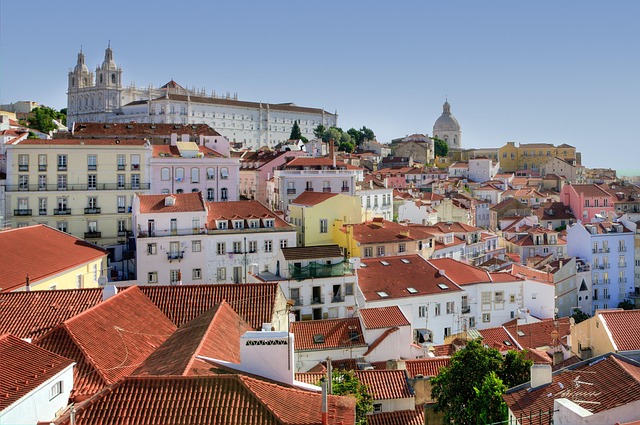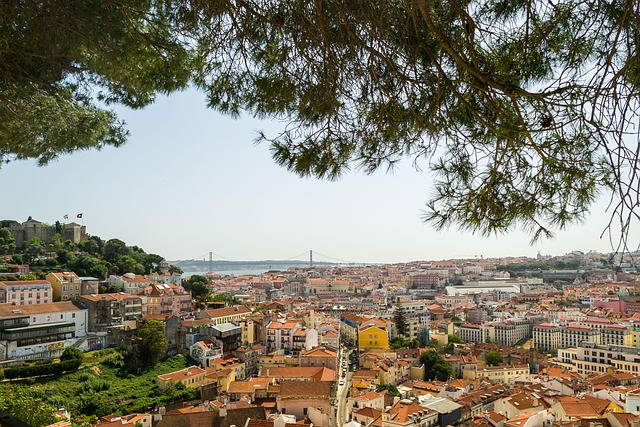What Is Lisbon Famous For? Discover the Soul of Portugal’s Capital Along Tram 28
Wondering what Lisbon is famous for? Portugal’s sun-kissed capital is known for its charming mix of old-world beauty and vibrant modern life. From the rattling yellow Tram 28 and the maze-like streets of Alfama to its scenic hilltop viewpoints, grand cathedrals and castles, and the haunting sound of Fado, Lisbon offers an experience like no other European city. Whether you’re wandering through centuries of history or watching the sunset over the Tagus River, Lisbon captivates every visitor with its warmth, light, and soul.
Why Is Lisbon Famous for Tram 28?

If there’s one image that captures the essence of Lisbon, it’s the bright yellow Tram 28. This vintage tram isn’t just a mode of transport — it’s a moving symbol of the city’s charm and history. When people ask “What is Lisbon famous for?”, Tram 28 is often the first answer. It winds through narrow streets, climbs steep hills, and connects many of the city’s top attractions, from Alfama to Baixa.
Riding Tram 28 Lisbon is like stepping back in time: wooden seats, squeaky brakes, and views that unfold like scenes from a movie. Along this route, you’ll discover cathedrals, castles, viewpoints, markets, and the soulful sound of Fado that define Lisbon’s unique identity.
Alfama – The Heartbeat of Old Lisbon

Lisbon is famous for its historic neighborhoods, and none captures its essence better than Alfama — the oldest and most soulful part of the city. As Tram 28 rattles through Alfama’s maze of cobblestone alleys, you’ll find yourself surrounded by colorful houses, tiled façades, and the faint echo of Fado drifting from nearby taverns.
Among Alfama’s many treasures is the magnificent National Pantheon (Santa Engrácia) This white-domed landmark dominates the skyline and holds the tombs of Portugal’s most notable figures, including Amália Rodrigues, the Queen of Fado. From its terrace, you’ll enjoy sweeping views over Alfama and the Tagus River.
Just a short walk away stands the Monastery of São Vicente de Fora, a serene architectural masterpiece decorated with intricate azulejo tiles depicting Portuguese life. Nearby, on Tuesdays and Saturdays, the lively Feira da Ladra flea market bursts into action — a true reflection of Lisbon’s bohemian spirit. Here, locals and visitors hunt for vintage treasures, antiques, and souvenirs that tell stories of the city’s past.
Another gem hidden within Alfama’s winding streets is the Igreja de São Miguel, a charming baroque church surrounded by local life. During summer festivals, its small square becomes one of the most joyful corners of the neighborhood.
And of course, Alfama is also home to the Fado Museum, where you can explore the origins of Portugal’s most emotional music and understand why Fado has become one of the things Lisbon is famous for around the world.
The City of Seven Hills – Miradouros and Breathtaking Views

Another reason Lisbon is famous is its dramatic landscape. Built on seven hills, the city offers countless viewpoints — or miradouros — where you can gaze over terracotta rooftops and the blue waters of the Tagus River.
AFor one of the best panoramas, climb up to Miradouro da Senhora do Monte in the Graça district. It’s the highest viewpoint in Lisbon, offering a sweeping vista that takes in the castle, downtown, and river — especially magical at sunset.
Not far away, the Miradouro das Portas do Sol is another favorite stop, providing the quintessential postcard view of Alfama’s red rooftops, the dome of the Pantheon, and the shimmering Tagus beyond. From here, you can even watch the Tram 28 Lisbon glide gracefully past, capturing the perfect Lisbon moment.
These miradouros perfectly capture what Lisbon is famous for — its golden light, romantic atmosphere, and endless views that make you fall in love with the city from every angle.
Churches, Castles, and Lisbon’s Timeless Architecture
Lisbon’s skyline is crowned with stunning historic monuments that tell stories of faith, resilience, and empire. Among them, none is more iconic than the Sé de Lisboa — Lisbon Cathedral. This Romanesque masterpiece dates back to the 12th century and has survived earthquakes, invasions, and time itself. Its mix of architectural styles mirrors the layers of Lisbon’s rich history.
Just above the cathedral lies the Castelo de São Jorge, a majestic Moorish fortress offering some of the best views in town. Strolling along its ancient walls feels like stepping back into medieval Lisbon, with peacocks roaming freely and panoramic views stretching across the city and river.
Down in the Baixa district, you’ll find one of Lisbon’s most impressive landmarks — the Arco da Rua Augusta. This triumphal arch marks the entrance to Praça do Comércio, the grand square that symbolizes Lisbon’s rebirth after the 1755 earthquake. Climb to the top for sweeping views over the elegant downtown grid and the waterfront.
Nearby, the Elevador de Santa Justa connects the lower Baixa with the higher Carmo area. This iron masterpiece, designed by a student of Gustave Eiffel, is both a practical elevator and an architectural wonder. From its top platform, you can see many of the places that make Lisbon famous — from the castle to the Tagus River.
Fado – The Soul of Lisbon
If you ask locals what Lisbon is famous for, many will answer with one word: Fado~. This hauntingly beautiful music expresses the Portuguese concept of saudade — a deep sense of longing and melancholy. Fado was born in the narrow streets of Alfama and Mouraria, sung by sailors, poets, and dreamers.
You can feel its presence everywhere in the city — from small neighborhood taverns to elegant concert halls. For a modern and intimate experience, visit Fado in Chiado, a live show that introduces visitors to this soulful tradition performed by professional singers and guitarists.
Hearing Fado in its birthplace connects you to the very essence of Lisbon — a city famous not only for its views and architecture but for the emotion that flows through its music and people.
So, What Is Lisbon Famous For?
Lisbon is famous for its historic trams, hilly streets, and sun-drenched viewpoints. It’s known for its ancient cathedrals, Moorish castles, and vibrant markets. But above all, it’s famous for its soul — the mix of history, light, and music that makes the city unlike anywhere else in the world.
Whether you’re gliding through the streets on Tram 28 Lisbon, watching the sunset from a miradouro, or listening to a heartfelt Fado performance, you’re experiencing what truly defines this city: a timeless charm that captures the heart of every traveler who visits.